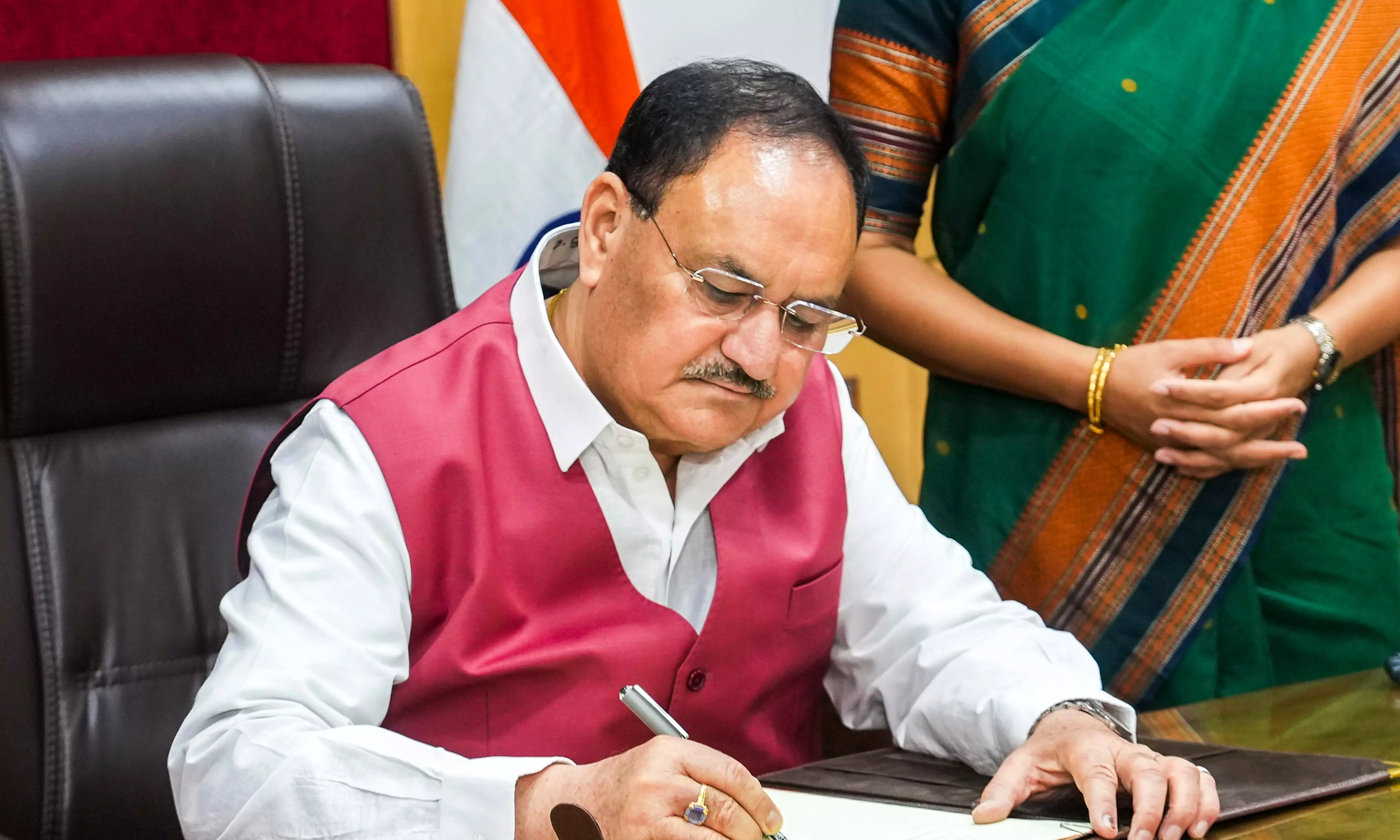
With NEET row at its peak, Health Minister Nadda has his hands full
Senior BJP leader Nadda has returned to the Cabinet as Union Health Minister, and he faces multiple challenges

Nearly five years after stepping down as the Union Health Minister to take over as the BJP chief, senior BJP leader Nadda has returned to the government in the same role. However, he faces multiple challenges in the crucial health sector.
In his previous stint, Nadda is credited with slashing the prices of coronary stents by 85% in a landmark move in 2017. The National Health Policy 2017 was also launched under his leadership, bringing the approach of “preventive healthcare” for the first time.
However, the scenario has changed drastically in the post-COVID world and the Union Health Ministry has identified a slew of new focus areas. Among these are enhancing research and development of drugs and diagnostics within the country, increasing surveillance of new pathogens and improving mechanisms for reporting vaccine-related side effects. Another key area is curtailing the country’s dependence on bulk drug imports from China.
The ministry is also focusing its efforts on strengthening drug manufacturing practices in the country through its regulatory arm, the Central Drugs Standard Control Organisation (CDSCO). It has made significant moves over the past few months following multiple complaints over the quality of drug manufacturing in India.
Here are the key challenges Nadda faces as he takes charge as the Union Health Minister once again.
NEET-UG exam row
The raging controversy over the National Eligibility cum Entrance Test (NEET) has shaken the faith of medical aspirants in the admission process. The exams were marred by alleged anomalies like paper leaks and inflated marks. However, the National Testing Agency (NTA) has reiterated that there was no paper leak and integrity of the exam throughout the country was not compromised.
Aspirants alleged that NTA claimed to have awarded grace marks according to the court order, but this sudden decision is unjust as the agency has not mentioned any methodology to award these “grace marks”. According to experts, the mark inflation in NEET UG 2024 result is expected to make securing a spot in medical school this year more difficult. Some aspiring students have turned to online platforms to demand the cancellation of the results and a re-examination.
Ayushman Bharat
With the BJP making a pre-poll promise of including senior citizens aged more than 70 years in the ambitious Ayushman Bharat scheme, Nadda will have to ensure the implementation of the promise on the ground. It will give a major boost to the scheme, under which the government provides an annual health cover of Rs 5 lakh per family to more than 10.74 crore poor families — about 50 crore people. The scheme covers secondary and tertiary care hospitalisation.
The Centre had earlier constituted an expert panel that is already working on ushering major changes in the scheme. “The scheme will not be able to take the load of increased beneficiaries in its current form. It is not viable enough to sustain more burden as per the feasibility study,” said an official from the health ministry. The scheme also suffers from the lack of participation of private hospitals.
The expert committee is expected to submit its report within the next few days, following which the government may offer more benefits.
Expanding AIIMS network
The number of AIIMS (All India Institute of Medical Sciences), the premiere healthcare institution, has increased from seven to 22. The Modi government initiated the concept of expanding these institutions after coming to power in 2014.
Though the government's move to increase the number of these institutions is laudable, many of them aren’t fully functional and are grappling to have top-class facilities to provide quality healthcare to all. The health ministry will have to renew its efforts to make these AIIMS completely functional so that a vast majority of the population may avail themselves of its benefits.
Streamlining pharma sector
Over the last couple of years, the health ministry, along with CDSCO, has initiated a string of measures to upgrade the quality of drugs being manufactured in the country. Among these steps were conducting raids on pharma units, scrapping production licences, implementing Schedule M, and launching QR codes to monitor the cough syrup market.
India’s pharma sector has registered tremendous growth over the last few years and is a significant contributor to export revenue. The ministry’s proactive approach in curbing anomalies in the sector will not address quality concerns but will also help to keep on track its target of reaching a size of $130 billion by 2030.
Elimination of TB by 2025
Before the pandemic set in, the numbers were declining but now they continue to spiral upward. According to the National TB Elimination Programme (NTEP), TB cases have gone up from 21 per cent in 2017 to 31 per cent in 2020 to 32 per cent in 2021. It slipped marginally to 30 per cent in 2022. The pandemic halted progress on a wider range of activities under NTEP for nearly two years.
Given this scenario, it seems an uphill task for the government to eliminate TB by 2025 – five years ahead of the global target as decided by PM Modi. As per India’s plan for 2017-2025, India should aim to report less than 44 new TB cases or 65 total cases per lakh population by 2025. The progress of the elimination needs close monitoring.

